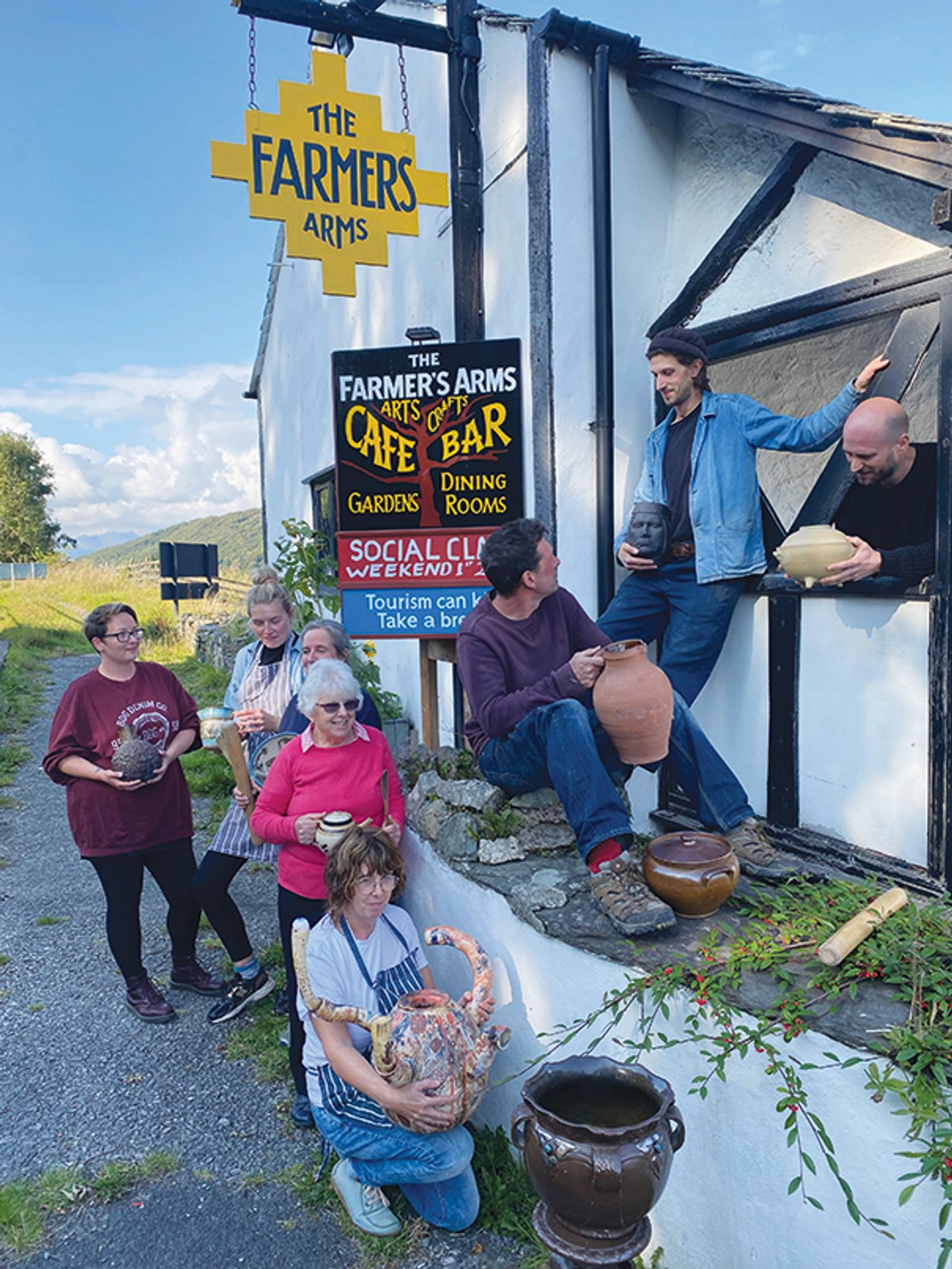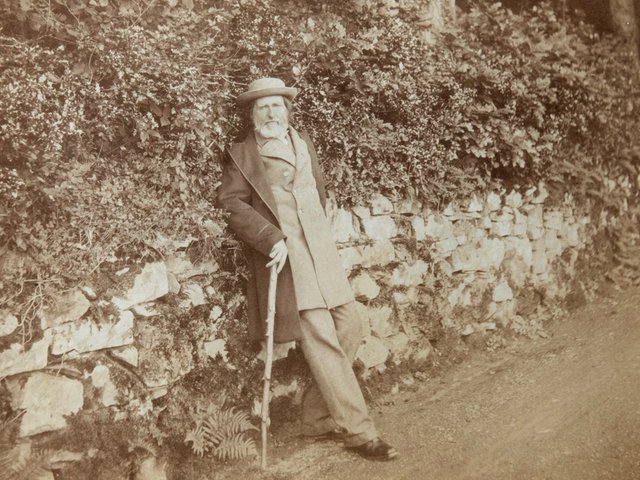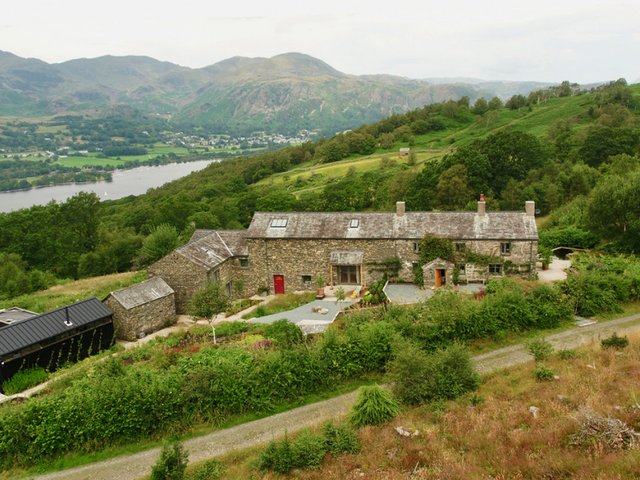To be both local and global, embedded in the surrounding community but also having a reach and impact worldwide, is an aspiration shared by most arts institutions. But few have achieved this aim as effectively or for as long as Grizedale Arts. For over two decades this remarkable organisation, based in the heart of the English Lake District, has extended its reach from agricultural and art projects in villages in Japan and China, to exploring notions of Romanticism at MoMA PS1 in New York, and installing a Colosseum of the Consumed activity space at the Frieze art fair, staging a water festival on Lake Consiton and supplying a customised tea urn for Water Yeat Village Hall in Ulverston.
“Much of what we do has involved a discussion about how artists might work more usefully within a given social context,” says Adam Sutherland, Grizedale’s director. “Underpinning our programme is the philosophy that art and artists can effect change and benefit wider culture and society.”
Over the years this notion of the usefulness of art and an adoption of a clear-eyed and often critical engagement with the complexities of rural culture has manifested itself in multifarious, multistranded projects. Grizedale Arts started life in the late 1960s as The Grizedale Society, with a programme of site-specific forest sculpture and land art activity within the extensive woodlands of Grizedale Forest, run by the UK Forestry Commission.
But the appointment of Sutherland as director in 1999 was accompanied by a radical shift in priorities and approach which continues to this day. “I tried to dispense with what I perceived to be the lies perpetuated to promote a simplistic vision of rural life” he remembers.“We hoped that the new programme might be more honest and reflect some of the more interesting if less marketable aspects of the rural idyll.” Early less than idyllic artist projects included Calum Stirling’s Logo Wall inserting adventure sport equipment branding into a drystone wall; and the erection of a giant billboard into the forest, which during its three year lifespan displayed projects by Bedwyr Williams, Graham Gussin and Adam Chodzko, before being offered to the villagers of Satterthwaite, who voted to destroy it by burning, in celebration of Queen Elizabeth II’s 2002 Golden Jubilee.
In Ruskin’s footsteps
Other projects found Grizedale working more constructively with the local populations, harnessing art and community by staging regular country fairs and public events. For A Different Weekend, held in the nearby town of Coniston in 2000, Mark Wallinger ran a face painting stall, Toby Zeigler won the Dressed Boat competition at the 2005 Coniston Water Festival, while Ray Davis of The Kinks oversaw the staging of his musical Child’s Play by Coniston school children.
The culmination of what Sutherland defines as this “reactive mode” where “we only responded to invitations from communities” was Grizedale’s refurbishment, between 2007-16 of the then-dilapidated Coniston Institute. This community run village hall had originally been rebuilt in the 19th century by the visionary Victorian polymath John Ruskin—whose views on the social benefit and utility of art are a major influence on Grizedale’s ethos. Along with extensive repairs and infrastructure improvements bringing the hall back to life involved the staging of numerous events and exhibitions by artists both local and international as well as installing a self-service library designed by Liam Gillick.
During this time Grizedale also shifted its operations to Lawson Park, a working farm dating back to the 14th century overlooking both Coniston Water and John Ruskin’s former estate of Brantwood. Painstakingly restored and also filled with Grizedale’s eclectic art collection, Lawson Park continues to host a multifaceted programme of projects and residencies from visiting artists and volunteers, which includes participating in farming, gardening and growing food in the surrounding grounds as well as making work. Activities have ranged from developing a House of Ferment devoted to means of preservation from Poland, China, Japan and Korea as well as the UK; to hosting visits from South London school children as well as from artists such as Tania Brugera ,who stayed at Lawson Park whilst researching her Museum of Useful Art.
In 2013 Grizedale and Tate co-commissioned Wantee Laure Provost’s installation in Lawson Park gardens created in response to the Dadaist Kurt Schwitters who lived and died in the Lake district in the 1940s. Made with help of local Coniston craftspeople and pupils from the nearby John Ruskin School, Provost’s Wantee resulted in her being nominated for—and winning—that year’s Turner Prize.
Grizedale has been about exporting dynamic, energised culture, not sucking at the teat of mass tourism
Running parallel to these local activities have been a range of international projects extending to and mixing up communities within and beyond the art world. William Pope L, Jeremy Deller, Alan Kane and Olivia Plender were among the artists investigating notions of romanticism in Romantic Detachment at MoMA PSI in 2004, while Seven Samurai involved a group of artists and gardeners travelling to the village of Toge in the Japan in 2006 to exchange skills and knowledge. A return visit by seven Toge farmers the following year resulted in the planting of rice paddies in Lawson farm. Happy Stacking in 2007 built up similar networks with the village of Nanling in Southern China while A Fair Land (2016) introduced a utopian model village revolving around a courgette based economy into the central quad of IMMA in Dublin.
More ongoing exchanges are with rural communities in Puglia, Italy; Corscia and Mallorca as well as The Ten Year Dream of Kiwanosato with the Southern Japanese village which from 2017 to the present involves reciprocal projects involving architecture, food and horticulture both there and in the UK. “Rural culture is an export, not a receiving house,” Sutherland says. “Right from the get-go, Grizedale has been about exporting dynamic, energised culture, not sucking at the teat of mass tourism.”
Now all these various strands have found a coalescence in Grizedale’s latest and most ambitious venture. The Farmers Arms is reputedly the oldest inn in the Lake District and having lain empty for many years was purchased by Grizedale in the middle of the pandemic, with the help of investors from both near and far. It opened in 2012 and in addition to serving locally sourced drinks and food—much of which is grown in the pub’s six acre grounds—there are Wednesday Soup Talks, musical gatherings and a range of workshops where pottery, craft and woodworking classes take place.
“Our vision is to create a hybrid of hospitality and creative endeavour” says Sutherland, who has recently been doing stints in the kitchen between chefs. In true Grizedale—and Ruskinian—spirit, education remains at the core. And also internationalism. A recent educational exchange with architect Takeshi Hayatsu has led to the construction of a traditional working Japanese-style Cold Store built with locally-sourced materials which has just been awarded the 2024 AJ Small Projects Award.
New kind of network
The Farmersand Lawson Park already welcome visitors but now they are offering an opportunity for greater access to these extraordinary creative crucibles. Grizedale is ushering in a new phase of engagement with the launch of The Grizedale Arts Club which aims to safeguard its future and offer a wider involvement in its extensive activities. Just as Grizedale Arts originally described itself “as new kind of art institution, one that works beyond the established structures of the contemporary art world,” so the Grizedale Arts Club bills itself “a new kind of network” where for a modest annual fee—and discounted for those living in Cumbria—members can participate more fully in its projects, whether in the form of exclusive access to discounted accommodation at The Farmers and Lawson Park or taking part in its many workshops and events at home or elsewhere. “My idea for Grizedale arts is that it is an ever changing organisation,” says Sutherland.
“We are using art in everyday life and encouraging people to think creatively about their condition, their situation, and to connect with like-minded organisations and people all over the world”. Whether rural or urban, art world or beyond this is a powerful network and replenishing network to tap into.
• www.grizedaleartsclub.org





